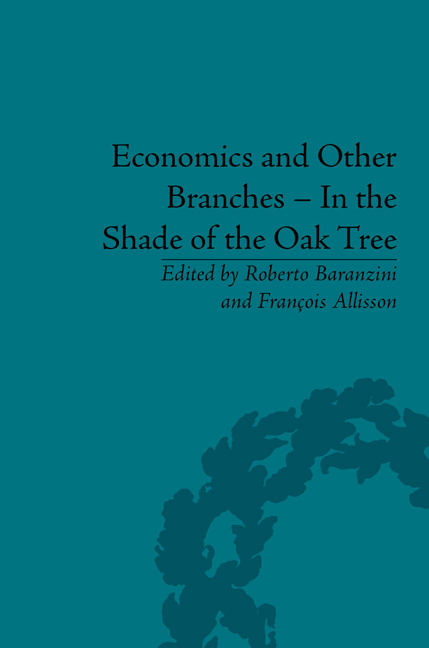Book contents
- Frontmatter
- CONTENTS
- List of Contributors
- List of Figures and Tables
- Introduction
- Pascal Bridel's Bibliography (up to 2013)
- Part I Léon Walras's Economic Thought
- Part II The Spreading of Thought
- Léon Walras's Reception
- The Lausanne School
- French Matters
- Cambridge UK
- Part III Monetary Theory
- Part IV Methodology
- 18 The Economics of Ethics and the Ethics of Economics in Adam Smith
- 19 Why do Economists and Philosophers Resort to the History of their Discipline?
- 20 Interest-Based Prediction and Mutual Expectations: Reflections on the Normative Value of Hobbesian Methodology
- 21 Tempests of the Business World: Weather Metaphors for Crises in the Nineteenth Century
- 22 Samuelson and the Non-Substitution Theorem: Some Methodological Remarks
- Part V Economics and Humanities
- Economics and Social Sciences
- Some Insights from Visual Arts
- Part VI Economics and Civil Society
- Notes
- Index
22 - Samuelson and the Non-Substitution Theorem: Some Methodological Remarks
from Part IV - Methodology
- Frontmatter
- CONTENTS
- List of Contributors
- List of Figures and Tables
- Introduction
- Pascal Bridel's Bibliography (up to 2013)
- Part I Léon Walras's Economic Thought
- Part II The Spreading of Thought
- Léon Walras's Reception
- The Lausanne School
- French Matters
- Cambridge UK
- Part III Monetary Theory
- Part IV Methodology
- 18 The Economics of Ethics and the Ethics of Economics in Adam Smith
- 19 Why do Economists and Philosophers Resort to the History of their Discipline?
- 20 Interest-Based Prediction and Mutual Expectations: Reflections on the Normative Value of Hobbesian Methodology
- 21 Tempests of the Business World: Weather Metaphors for Crises in the Nineteenth Century
- 22 Samuelson and the Non-Substitution Theorem: Some Methodological Remarks
- Part V Economics and Humanities
- Economics and Social Sciences
- Some Insights from Visual Arts
- Part VI Economics and Civil Society
- Notes
- Index
Summary
The world takes people too much at their words.
When dealing with the Pareto-Walrasian general equilibrium theory, Pascal Bridel repeatedly underlined that from one generation of economists to another, the methodology ruling this theory has been continuously changing: from Léon Walras's idealism to Vilfredo Pareto's positivism; from Paul A. Samuelson's operationism to Robert E. Lucas's instrumentalism; and so forth. In this regard, one major methodological turn was the move from cardinalist utility functions, resting on psychological foundations, to ordinalist ones. Samuelson's contribution, both methodological (introducing operationism in economics) and theoretical (the well-known revealed preference theory), is probably the most important, although recent works in economics increasingly reintroduce psychological elements in economic theory. In our essay we attempt at drawing a parallel between Samuelson's operationalization-of-consumer theory through revealed preference theory, and his works in production theory from the late 1940s on, in particular the non-substitution theorem (NST).
In 1949, the NST was first demonstrated simultaneously and independently by Samuelson and Georgescu-Roegen for a so-called (static) ‘generalized model of Leontief’. The theorem raised the question as to whether substitutions among factors of production could not occur even if possible. Samuelson and Georgescu-Roegen showed that, although possible, in certain conditions if the structure of final demand changes, the structure of production remains unchanged and no factor substitution occurs.
- Type
- Chapter
- Information
- Economics and Other Branches – In the Shade of the Oak TreeEssays in Honour of Pascal Bridel, pp. 309 - 316Publisher: Pickering & ChattoFirst published in: 2014

